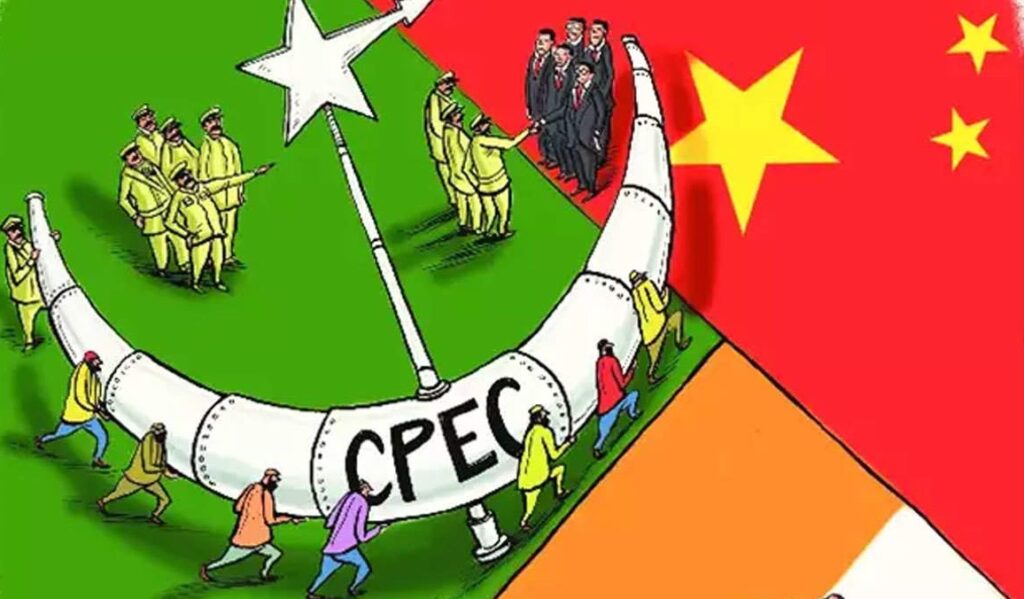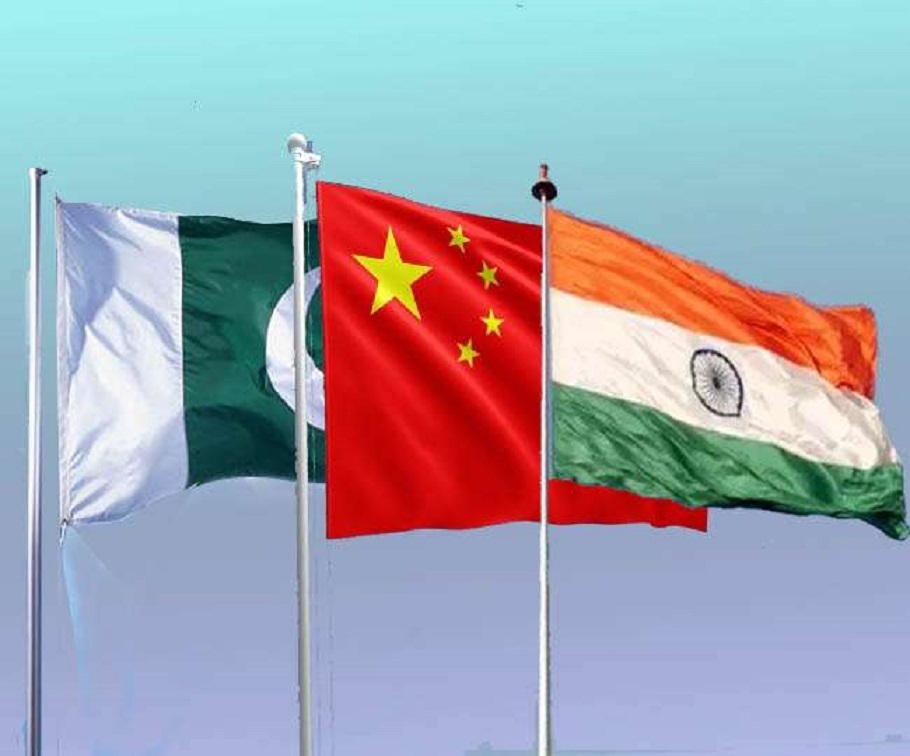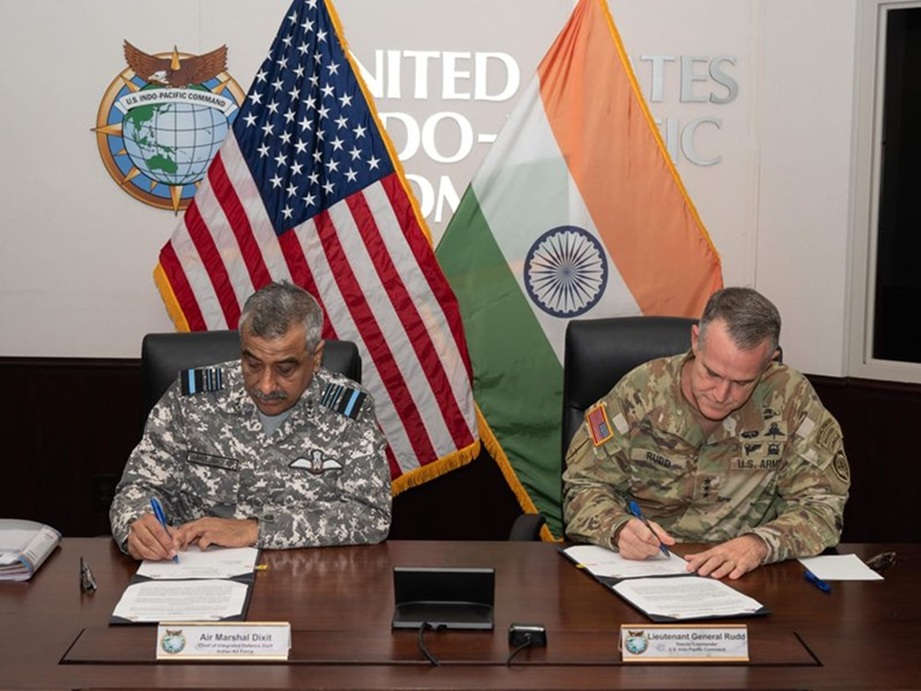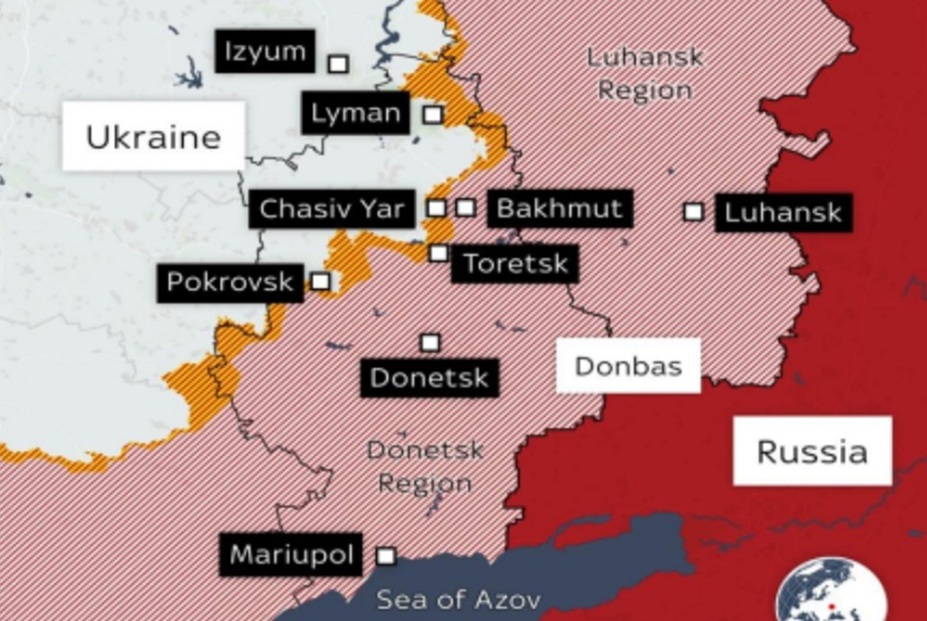Strategic cultures plays a major role in defining the strategic outlook and behaviour of a nation.
The present dynamics of the unabated Indo -Pak Proxy War and Indo-China periodic standoff, with incremental aggression, are a manifestation of the strategic culture driven by the evolving geopolitics. While the globe reels under the COVID Pandemic, the heating up of the Indo-Pak-China strategic triangle is indicative of its continued volatility and rivalries in the South Asian subcontinent. The deep seeds of this mistrust and competition shaping confrontation, are sown in the nation’s strategic culture which merits a pragmatic analysis.
Strategic Culture and Nation States
The strategic culture of a nation provides a prismatic influence of culture on national beliefs and strategic choices. It gets reflected in the light of the geostrategic challenges a nation confronts and the course it dons in pursuance of its national interests. Every state exhibits its geopolitical behaviour within the contours of its historical baggage, geographical compulsions, cultural influences and national ideology. Interstate behaviours like Iran – Israel, India – Pakistan, North and South Korea, Chinese incremental hegemony, stand testimony of the same. Closer home, the strategic triangle of India-Pakistan-China is symbolised by disparate ideology yet mutually influencing relationship, deeply rooted and intertwined in historical contradictions. This has led to mistrust, collusive interplay and a fragile oscillating balance. The triangular cultural outlook is defined by the dynamics between a fragile Pakistan Islamic republic obsessed with the revisionist ideology, a stable Indian democracy with decisive polity, agile diplomacy and redefined upsurge of nationalistic ideological outlook and an aggressive, incremental expansionist, communist China challenging strategic stability. This strategic triangle also bears the shadow of major world powers, their interests and personal agendas, with the strategic centre of gravity being swept from Europe back to Asia. Besides, this triangle has the discredit of largest warring militaries, unresolved disputed borders acting as flashpoints, nuclear brinkmanship, the quest for competing for strategic space and proxy war creating strategic instability. Its geostrategic location and geographical expanse act as a fulcrum influence the entire global economy and security matrix, thereby any turbulence in this area will have global ramifications.
Subcontinental strategic culture and nation-specific narratives in the Indo-Pak-China calculus thus deserve an in-depth analysis to comprehend the evolving regional strategic challenges and ever disconcerting calm. Ideological incompatibilities, mistrust and historical paradoxes would continue to find strategic space in these states.
India’s Strategic Culture
India’s strategic culture is complex, yet composite, coherent and distinct by itself. The teachings of mythological epics like Ramayana and Mahabharata, values and education imbibed by ancient Hindu Vedic civilizations, statecraft with threads from Kautilya’s Arthashastra and braving over 2000 years of repeated invasions from the time of Alexander the Great in the year 321 BC to the British, only reinforced the idea of India. The secular threads and unity of the nation stood firm and deeply engrained, never severed or completely submerged by repeated challenges to its survival. This was a result of over 5000 years old time tested system based on “Dharma -Artha-Kama-Moksha”. The idea of India embraces the Upanishads world view of “Vasudhaiva Kutumbakam”, a Sanskrit phrase, which means “the world is one family”. “Satyameva Jayate” (Sanskrit: “Truth alone triumphs”) a mantra from the ancient Indian scripture, symbolized the deep cultural ethos and values. India was indeed a strong nation, with a strong economy and a glorious culture with the power and the strength of knowledge and character. From 1857 onwards to 1947, all castes and communities of this diverse yet united nation fought for freedom and a unique bonding took birth. However, its traditional values, strengthen its secular structure with space for all religion, even though perceived in present times as shrinking with ongoing intolerance fueled by political slugfest. This made India a tolerant and secular entity, as compared to Pakistan and China. However, the definition of tolerance has often been strategically misconstrued as a passive soft state incapable of strong decisions to preserve national interest. This has seen a recent course correction with decisive political leadership, demonstrated military capabilities and strategic communication through agile diplomacy. Balakot and Doklam stand testimony of the same. While India has tackled many of its challenges in the most creditable manner, the challenges of internal cohesion, strategic stability in both military and economic domain and optimizing human resource development remain ongoing for its global stature.
India’s geopolitical options and threat environment were profoundly altered by the partition of India giving birth to a belligerent fundamentalist Pakistan and the uncertainties of the rise of an expansionist China. India’s strategic culture thus theorizes the defence of India as a geographical expression with turbulent threats from physical domains of land, sea, air and space beside the newly emerged virtual domains of cyber and information. Its geographical expanse being so vast, the travel of turbulence from one end to another loses its resonance in transit itself. However, the recent acts of terrorism and extremism have trespassed all boundaries, raising concerns of emerging threats and potential challenges. Unlike China and Pakistan, India’s strategic culture does not have a bias for expansionist territorial aspirations, beyond those illegally occupied by the neighbourhood. Thus India stands distinct from the conflicting revisionist ideology of its two neighbours viz Pakistan and China.
Apart from the defence of India as such, the most predictable effects of Indian strategic culture is in its foreign policy objectives and quest for strategic autonomy. The evolution of India’s ‘strategic culture’ resulted in the fundamental changes of India’s security strategy, her nuclear strategy in particular which has a profound bearing on her foreign policy reorientation in a post-Cold War era. Subsequently, India’s ‘strategic culture’ experienced periodic changes with dynamic world geopolitical situations, especially in recent times with a nationalist vision for making a ‘New India’. Yet the spirit and soul remain firm and enduring, based on deep cultural ethos and values. However, some weakness in strategic culture has stemmed from majoritarian politics, radical ideologies and over-emphasis on socio-cultural issues. It is also truism by now that we live in an era of post-COVID redefined Globalization 2.0, where states are increasingly interconnected and interdependent, yet selfish in pursuing their national interests for human survival and economic revival. More and more, as economic and security interests rely on international and transnational forms of cooperation, states must thus reconcile their historical narratives and pragmatism must be accommodated within competitive frameworks. As an emerging power, India thus uses a combination of both soft power and hard power balance in pursuance of its national interests.
Pakistan’s Strategic Culture
Pakistan’s strategic culture is deeply rooted in its revisionist ideology. It aims to foster nationalism with a predominance of the military and mullah, as a state within a state, professing disruptive policies. These two institutions have an all-pervasive influence in dealing with both internal politics and foreign policy framework. In particular radicalization of the Pak Army and its role as the custodian of this ideology and defenders of Islam is ingrained in the historic culture of the nation. Insecurities of partition, vulnerable geography, the obsession of Kashmir, and scars of 1971 humiliation, remain deeply embedded in the nations psyche. Its strategic culture and outlook are thus driven by its ingrained insecurity and revisionism, conservative Islamic political identity as a flag bearer, quest for predominance on its western border’s, nuclear deterrence and anti-India belligerence, thereby viewing Afghanistan as a source of instability and India as a hegemon. Thus, it perceives Afghanistan from the prism of strategic depth by seeking leverage through homegrown Taliban on one side, and on the other hand waging a proxy war against India to wrest Kashmir, under its expanding nuclear comfort zone. Its policy towards Afghanistan is aimed to restrict Indian access and significant presence which could harm Pakistan’s interests. Its claim to Kashmir is embedded in the pre-partition notion that Pakistan as an Islamic republic is the natural homeland of South Asia’s Muslims. Many of the homegrown militants and their descendants spawned by Pakistan for Afghanistan during the Soviet era and as proxies for Kashmir, have boomeranged against the nation itself, making it the fifth most terrorist incident affected nation in the world as per the 2019 Global Terrorism Index. Yet it fails to learn its lessons like an ostrich, even in an era when it’s on the brink of economic collapse and stricken by COVID. These define its cultural outlook more from ideological outlook, rather than security-driven realism. Thus, it continues as a fragile rentier economy with a poor development index, due to disruptive strategies. The fallacy of nuclear umbrella in Pakistan’s strategic culture and nexus with China has further encouraged risk-taking behaviour as a nation, destabilising the region and being a convenient pawn to China’s expansionist designs, including strategic aims behind CPEC. These strategic cultural perceptions leave very little room for Pakistan abandoning its self-destructive path and ushering peace in the sub-continent. Given the enduring nature of Pakistan’s strategic culture, it is thus unwise to expect any change in Pakistan’s behaviour to disruptive revisionist foreign policy, using Islamist militants as a strategic tool and reorientation from Punjab Sunni dominated suppressive domestic politics. The country thus continues to generate a high-risk strategic instability, impacting its neighbourhood in particular and the world at large. The neorealism is indicative of Pakistan’s continued obsession with destabilising India, continued support to Taliban regime in Afghanistan and seeking Islamic global leadership, driven by Pak ISI and Islamist agenda.
China’s Strategic Culture
The culture of China is one of the world’s oldest and most complex cultures. Chinese history, as documented in ancient writings, dates back some 3,300 years. China thus perceives itself not as a nation-state but rather a “state of civilization.” Chinese strategic culture and history have several distinctive characters and varied narratives. As a state it reflects inward-looking cloaked defensive behaviour, externally it professes the revisionist doctrine of foreign policy, militarily it focuses on power for strategic coercion, economically it creates resilience and global dependencies and strategically it aims at being the World Super Power. Thus, contemporary China’s reflects defensive, revisionist and aggressive expansionist designs all at the same time while professing peaceful rise. This rise of China politically, militarily, and economically is fundamentally changing the status quo in the Pacific Rim and Indian sub-continent and can be considered one of the most volatile developments in the post-Cold War period. Its transformation from competition to confrontation flaming potential conflicts has led to strategic instability and realignments.
Another deeply embedded manifestation is the “Middle Kingdom” mentality. Though it may be projected as defensive, it is intertwined with the expansionist behaviour, with incremental territorial expansion manifestations. In defining China as the Middle Kingdom as early as the Song Dynasty, Shi Jie (1005-45), drew upon cosmology reasoning saying “heaven is above, the earth is below, and that in-between heaven and earth is called China”. The weight of the past shaping the strategic culture is also embedded in the narrative of the “Century of Humiliation” defined by defeat, unfair treaties, loss of territory and humiliations at the hands of western powers, before the People’s Republic of China was established in 1949. Chinese nationalism in its basic form thus encompasses the pride of being Chinese, the collective memory of the humiliations of the past, and the aspiration for a return to world supremacy.
The roots of modern Chinese thought are also largely inspired by Confucian philosophy built on an ancient religious foundation to establish the social values, institutions, and transcendent ideals of traditional Chinese society. Confucianism is often associated with virtues of humanity, righteousness, propriety, wisdom, and faithfulness some interrelated terms such as harmony, peace, cooperation, and defence. However, it also legitimized the power and authority of the ruler, especially related to the hierarchical order in which there is a clear boundary between the superior on one hand and the inferior on the other. To that extent Confucian strategic culture helps explain China’s incremental assertive behaviour strategy in the South China Sea. In short, war or the use of force is considered as a punishment against others who violate their authority and hierarchical order in the region. This also explains the Chinese outlook on Sino-Indian border disputes. China’s aggressive behaviour thus reflects its ancient strategic culture deriving from complex and multiple historic narratives affecting its foreign policy and outlook today.
The Clash of Cultures and Threats to Security
The Indian subcontinental security canvas, if not irretrievably perilous, is stressed and susceptible to conflict with neighbours. In the absence of functional cooperative mechanisms and lockdown peace talks, the spiral escalation from competition to confrontation to the conflict remains real. Ironically, the Pak-China nexus and its strategic aspirations to stymie the rise of India in the international arena also find increasing focus. The COVID pandemic era too has had its own security dynamics. Pakistan continues to keep the Proxy War brewing, divert COVID fallouts on the nation by stirring nationalism, keeping the Pak army relevant and gaining space constricted by voids in militant leadership, decreased infiltration and impact of revocation of Art 370 and 35A. On the other hand, China utilises this opportunity by aggressing overtures in Ladakh and transgressions, to divert world critique on supposedly “Chinese Flu albeit COVID”, stir nationalism in its communist party meet, and stymie India exploiting Chinese market voids for its economic interest. The synergetic heating up of summer in the valley by Pakistan, complemented by the aggressive posturing and actions in Ladakh by China or vice versa, are only indicative of collusive designs. However, the time is not right for a full-scale escalation when economies are the nose-diving the world over and national effort focused on combating COVID. Thus, while military preparedness and dissuasive posturing must ensure thwarting any evil design, diplomacy must step in to prevent any aggressive posturing from turning into a confrontation. China must also be made conscious of the increasing world opinion against its incremental expansionism and aggressive overtures, which would further isolate it in the global order, triggered by its COVID linkages.
In the context of Indo -Pak clash of cultures, belligerence against India and fuelling proxy war under the nuclear umbrella is here to stay. In fact, traditionally whenever there has been a crisis in Pakistan, the diversion has been fuelling the Proxy war / escalating trans-border firing. This behaviour during COVID times is thus nothing new. However, the possibility of a spillover to limited war, while in the realm of possibilities, is certainly undesirable in the present times. At the same time status quo would be a victory for Pakistan. Thus, India needs to take a cue from the Israeli strategy of “mowing the lawn”, with periodic assured kinetic retribution, as part of punitive deterrence, to ensure the cost of waging Proxy war for Pakistan is made prohibitive. The levers of escalation must however be so managed by India, that it is kept below the conflict initiation zone. Thus politico-diplomatic dissuasion, economic coercion, non-kinetic means and punitive military retribution, must presently achieve the desired objectives, precluding an all-out war.
In the Indo-China context, China presents a long-term, and multifaceted primary challenge to India. Active disputed borders on India’s land and maritime periphery, nuclear weapons, and incremental expansion in the Indo- Pacific exemplify China’s hegemonic strategic culture. China not settling the boundary dispute with India, holding it as domicile’s sword, leaves no doubt that undercurrents of its aggressive designs remain embedded. China sees India as not only a regional competitor but a major geostrategic player in the Indo-Pacific and a global anchor meant to contain its rise. Thus, dealing with China has always remained one of India’s biggest foreign policy challenges, with comparative asymmetry in economic and military capabilities between the two Asian giants. However, India is no walkover today, politically, diplomatically, economically or militarily, with its military might at number four in the world just after China who is number three in the GFP 2020 (Global Firepower Index). GFP ranking is based on each nation’s potential war-making capability across the land, sea, and air fought by conventional means. The results incorporate values related to manpower, equipment, natural resources, finances, and geography represented by 50+ individual factors used in formulating the finalized GFP ranks, which provide an interesting glimpse into an increasingly volatile global landscape where war seems all but an inevitability. Thus, the present reality is that neither nations have the capability to achieve their politico-military aims through conflict. The notion of a military victory against China thereby rests on ensuring the status quo by denying China its military, psychological and political objectives which are well within the realms of present capabilities. Relations with China while being managed from competition to cooperation politically, the gap between military aggressive posturing and confrontation to the conflict will have to be plugged by astute and agile diplomacy. China’s periodic forays in peacetime by way of transgression will thus have to be denied any psychological gains with due credible military deterrence and astute political decisiveness to preserve its core national interests. This would be an important aspect of strategic messaging and desired end state in itself for India. This requires collaborative military, economic, informational, diplomatic and political levers to deter China’s revisionist culture. Chinese aggressive culture and forays will thus need to be defused by capacity building in these domains to such levels that “Kautaliya’s Chanakiyaniti” will subdue the “Chinese Checker”’ in their own mould of Sun Tsu’s classical dictum of “winning without fighting.

Conclusion
Strategic culture as an analytical tool has increasingly gained relevance in-depth understanding a states behaviour and strategic outlook. Yet it remains dynamic to evolving geopolitical realities, not to be preordained on the past dictating the future, or the future burying the deeply embedded strategic culture. The Indo-Pak-China strategic triangle and its volatile behaviour are best understood in the background of their clashing strategic cultures. Thus volatility, uncertainty, complexity and ambiguity define their state, with all-season China-Pak nexus inherent in it. However, these were not born as civilisation enemies. Thus, contradictions, regional hegemony and potential confrontations must be solved through a formula of symbiotic realism finding space for cooperative mechanisms based on mutual trust, peace, tranquillity and shared growth. This remains a challenge for the region.
Title image courtesy: https://english.jagran.com/india/
Disclaimer: The views and opinions expressed by the author do not necessarily reflect the views of the Government of India and Defence Research and Studies
References
- Nayef Al-Rodhan, “Strategic Culture and Pragmatic National Interests”, 2017, Global Policy, ( https://www.globalpolicyjournal.com/blog/22/07/2015/strategic-culture-and-pragmatic-national-interest)
- Rodney W. Jones, “India’s Strategic Culture, 2006”, Defense Threat Reduction Agency, (http://erazvitie.org/english/strategicheskaja_kultura__indii)
- General V P Mallik,” India’s Strategic Culture and Security Challenges”, ORF, (https://www.orfonline.org/research/indias-strategic-culture-and-security-challenges/)
- C. Christine Fair, “Pakistan’s Strategic Culture”2016 ,(https://www.researchgate.net/publication/310605038_Pakistan%27s_Strategic_Culture_Implications_for_How_Pakistan_Perceives_Threats_and_Counters_Them)
- Kenneth D. Johnson, “China’s Strategic Culture: A Perspective for the United States”, Strategic studies Institute, US Army War College, (https://www.jstor.org/stable/resrep11279)







